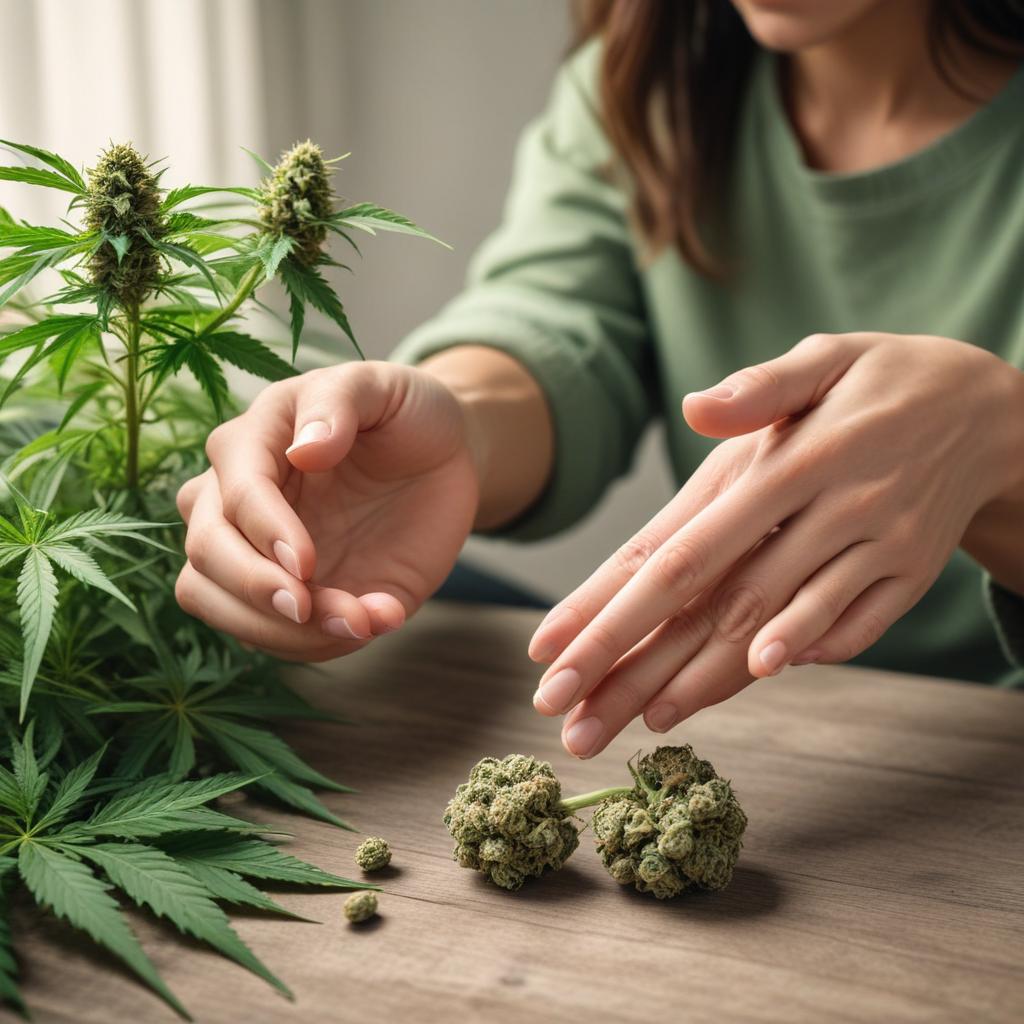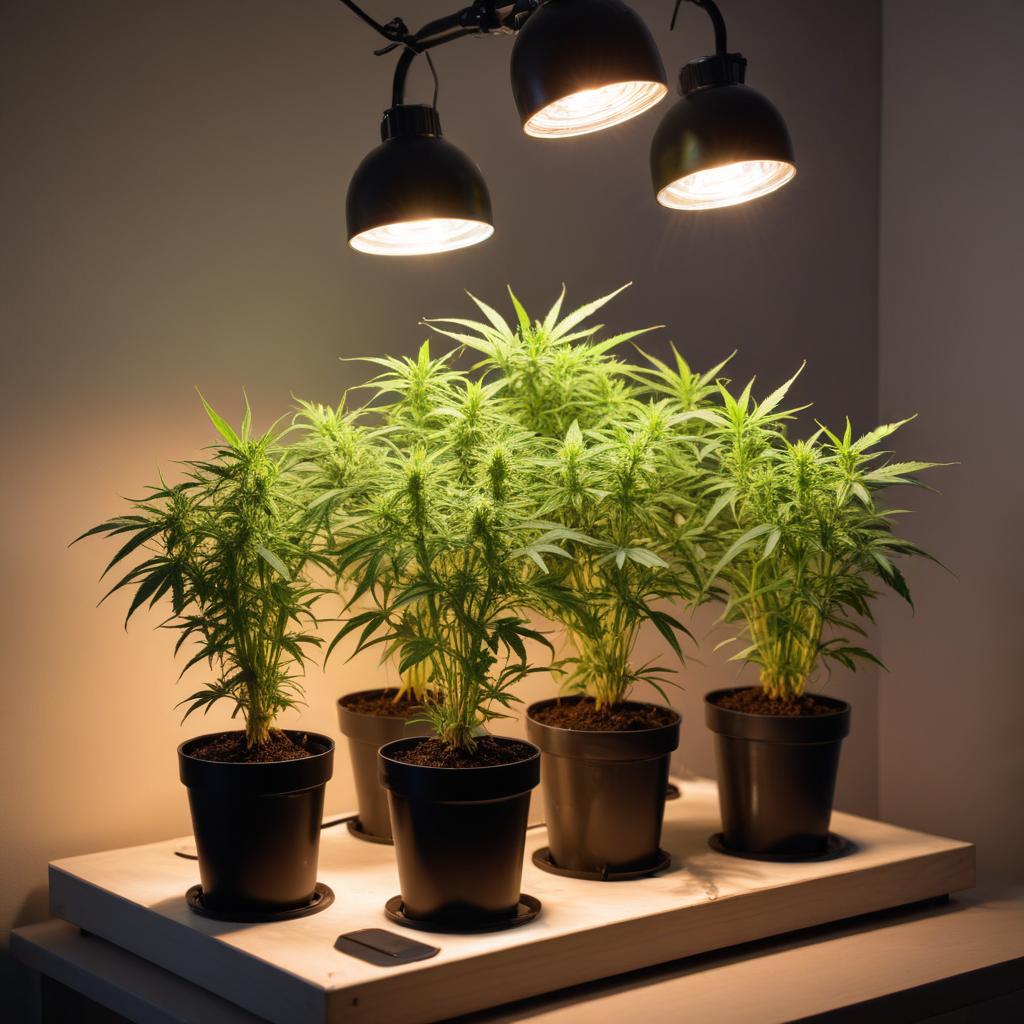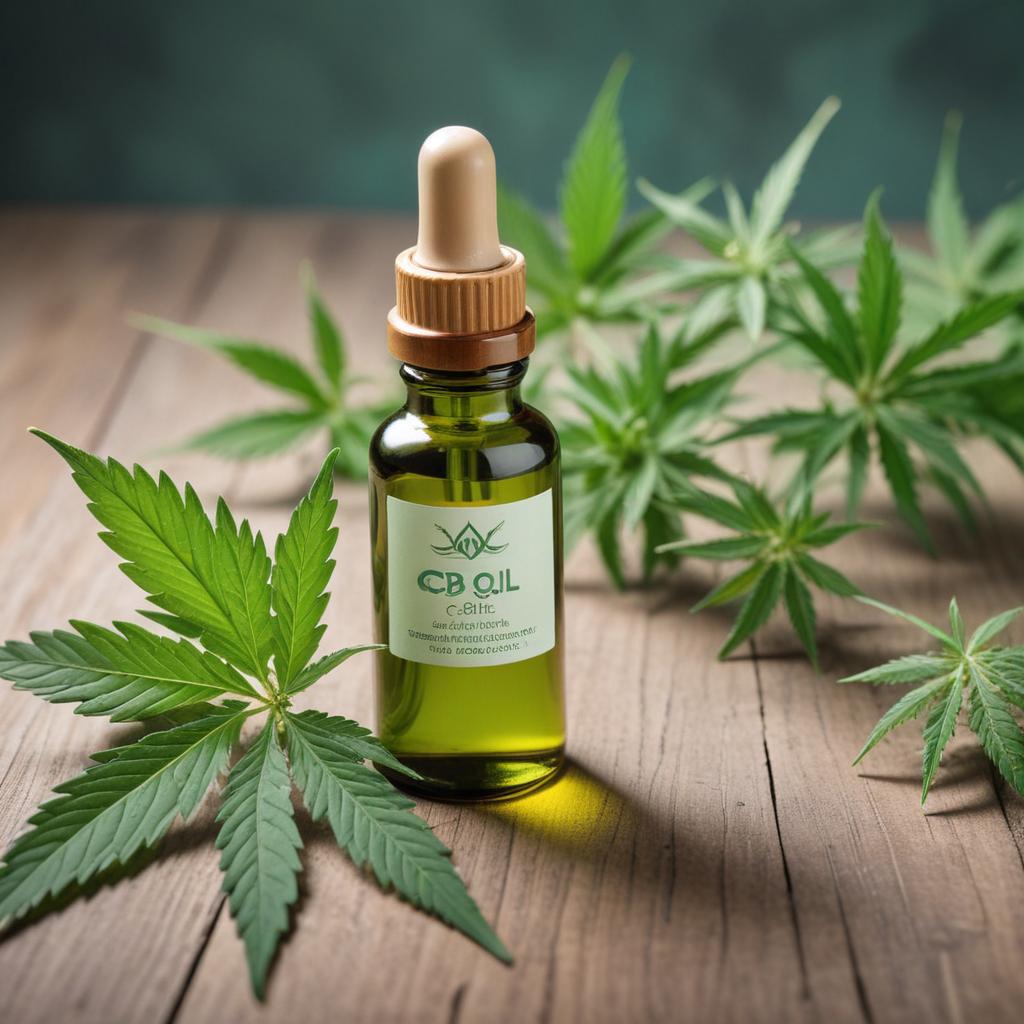How Cannabis Can Help Manage Chronic Pain

Chronic pain affects over 50 million Americans and is one of the leading causes of disability worldwide. For many, traditional pain medications provide inadequate relief or come with serious side effects. Cannabis has emerged as a promising alternative for managing chronic pain, with thousands of patients reporting significant improvement in their quality of life.
Understanding Chronic Pain
Chronic pain is defined as pain lasting longer than 12 weeks. Unlike acute pain, which serves as a warning signal for injury, chronic pain persists long after the initial injury has healed - or occurs without any identifiable injury at all. Common types of chronic pain include lower back pain, arthritis, neuropathic pain, fibromyalgia, and migraine headaches.
Traditional treatments include NSAIDs (like ibuprofen), acetaminophen, and prescription opioids. However, NSAIDs can cause gastrointestinal problems and cardiovascular risks with long-term use. Opioids, while effective, carry significant risks of dependence, tolerance, overdose, and death. The opioid crisis has claimed hundreds of thousands of lives, prompting many patients and physicians to seek safer alternatives.
How Cannabis Relieves Pain
Cannabis works for pain relief through multiple mechanisms. The human body has an endocannabinoid system (ECS) that helps regulate pain, mood, inflammation, and immune response. When you consume cannabis, cannabinoids like THC and CBD interact with cannabinoid receptors (CB1 and CB2) throughout your body, modulating how pain signals are transmitted and perceived.
The Endocannabinoid System
CB1 receptors are primarily found in the brain and central nervous system. When THC binds to CB1 receptors, it can reduce the intensity of pain signals reaching the brain. This is why THC is often more effective than CBD alone for severe pain. CB2 receptors are mainly in the peripheral nervous system and immune cells. When cannabinoids activate CB2 receptors, they reduce inflammation and provide pain relief without psychoactive effects.
Anti-Inflammatory Effects
Much chronic pain involves inflammation. Both THC and CBD have powerful anti-inflammatory properties. They suppress the production of pro-inflammatory cytokines and chemokines, reduce immune cell activation, and modulate the inflammatory response. For conditions like arthritis, where inflammation is the primary driver of pain, this anti-inflammatory action can provide substantial relief.
What Does the Research Say?
Scientific evidence supporting cannabis for chronic pain has grown substantially in recent years. A comprehensive review published in the Journal of Pain examined 47 studies and found that cannabis reduced chronic pain by approximately 40% in patients. The National Academies of Sciences, Engineering, and Medicine conducted an exhaustive review of over 10,000 studies and concluded that there is substantial evidence that cannabis is effective for chronic pain in adults.
Specific studies have shown promising results for various types of chronic pain. For neuropathic pain (nerve pain), which is notoriously difficult to treat, cannabis has shown particular effectiveness. A study in the Journal of Pain found that inhaled cannabis reduced neuropathic pain intensity by 30% compared to placebo. For arthritis patients, topical and systemic cannabis has been shown to reduce joint pain and improve mobility.
Types of Chronic Pain Cannabis Can Help
1. Neuropathic Pain
Neuropathic pain results from nerve damage or malfunction. It's often described as burning, shooting, or electric-shock sensations. Conditions include diabetic neuropathy, post-herpetic neuralgia (shingles), and nerve compression injuries. Cannabis has shown particular effectiveness for neuropathic pain, likely because cannabinoid receptors are abundant in nerve tissue. Many patients find that cannabis provides better relief than conventional medications like gabapentin or pregabalin, with fewer side effects.
2. Arthritis
Arthritis affects over 50 million Americans. Both osteoarthritis (wear-and-tear) and rheumatoid arthritis (autoimmune) involve joint inflammation and pain. Cannabis's anti-inflammatory properties make it particularly well-suited for arthritis. Both systemic use (edibles, tinctures) and topical application can provide relief. Many arthritis patients report reduced joint pain, improved mobility, and decreased reliance on NSAIDs after incorporating cannabis into their treatment plan.
3. Fibromyalgia
Fibromyalgia causes widespread musculoskeletal pain, fatigue, and cognitive difficulties. The condition is poorly understood and difficult to treat. Research suggests that fibromyalgia may involve endocannabinoid deficiency, making cannabis supplementation particularly relevant. Studies have shown that cannabis can reduce pain intensity, improve sleep, and enhance quality of life for fibromyalgia patients. Many patients report that cannabis is more effective than traditional fibromyalgia medications like pregabalin or duloxetine.
4. Back and Neck Pain
Lower back pain is the leading cause of disability worldwide. Whether from injury, herniated discs, muscle strain, or degenerative conditions, back pain can be debilitating. Cannabis provides relief through pain modulation, muscle relaxation, and anti-inflammatory effects. Many patients find that cannabis allows them to reduce or eliminate opioid use while maintaining good pain control.
5. Migraine Headaches
Chronic migraines can be severely disabling. Cannabis has shown promise both for preventing migraines and treating acute attacks. Some research suggests that migraine sufferers may have lower levels of endocannabinoids, and supplementing with cannabis may correct this deficiency. Many migraine patients report that cannabis reduces frequency, duration, and intensity of attacks.
Finding the Right Cannabis for Pain
THC vs. CBD
For pain relief, both THC and CBD play important roles, but they work differently. THC directly activates CB1 receptors in the brain and nervous system, providing powerful pain relief but also producing psychoactive effects. It's particularly effective for severe, acute pain. CBD doesn't directly activate cannabinoid receptors but modulates the endocannabinoid system in other ways. It provides pain relief without intoxication, making it suitable for daytime use or for patients who want to avoid feeling "high." Learn more about how CBD works in our detailed guide.
Most patients find that a combination of THC and CBD works best for chronic pain. Ratios of 1:1, 2:1 (THC:CBD), or 1:2 are popular. The CBD can temper the psychoactive effects of THC while enhancing pain relief through the "entourage effect" - the synergistic interaction of multiple cannabis compounds. Choosing the right strain for your specific pain type is crucial.
Delivery Methods
- Vaporizing/Smoking: Provides fastest relief (2-5 minutes) but lasts shortest (2-3 hours). Good for breakthrough pain. Vaporizing is healthier than smoking as it doesn't produce harmful combustion byproducts.
- Tinctures/Oils: Taken sublingually (under the tongue), these provide relatively fast relief (15-30 minutes) lasting 4-6 hours. Easy to dose precisely. Excellent for consistent, all-day pain management.
- Edibles: Take 1-2 hours to kick in but provide longest-lasting relief (6-8+ hours). Great for nighttime pain or all-day coverage. Start low with edibles (2.5-5mg THC) as effects can be intense.
- Topicals: Applied directly to painful areas. Don't produce psychoactive effects as they don't enter bloodstream. Excellent for localized pain like arthritis, muscle soreness, or inflammatory conditions.
- Capsules: Similar to edibles in terms of onset and duration. Provide consistent dosing. Good for maintenance pain management.
Strain Selection
While the indica/sativa distinction is somewhat outdated, it can still provide general guidance. Indica-dominant strains tend to be more sedating and body-focused, making them good for nighttime pain relief. Sativa-dominant strains are more energizing, better for daytime use. Hybrid strains offer balanced effects. Beyond indica/sativa, pay attention to cannabinoid ratios and terpene profiles.
Terpenes contribute significantly to pain relief. Myrcene has sedative and muscle-relaxant properties. Beta-caryophyllene directly activates CB2 receptors, providing anti-inflammatory effects. Linalool (also in lavender) has analgesic and anti-anxiety properties. Pinene may help with inflammation. Look for strains or products high in these terpenes for maximum pain relief.
Dosing for Chronic Pain
Finding the right dose is crucial and highly individual. Start low and go slow. For THC, begin with 2.5-5mg and wait at least 2 hours before taking more (for edibles) or 30 minutes (for other methods). Gradually increase until you find effective relief with tolerable side effects. For CBD, start with 10-20mg daily and increase by 5-10mg every few days until you find relief. Some patients need 100mg+ of CBD daily for significant pain reduction.
Many pain patients find that consistent, scheduled dosing works better than "as needed" use. Taking cannabis regularly maintains stable cannabinoid levels in your system, providing more consistent pain control. You might take a morning dose (lower THC for functionality), midday dose, and evening dose (higher THC for nighttime relief).
Cannabis vs. Opioids
One of the most important findings in cannabis research is its opioid-sparing effect. Multiple studies have found that patients using medical cannabis can reduce or eliminate their opioid use. A 2016 study found that states with medical cannabis laws had 25% fewer opioid overdose deaths than states without such laws. A 2021 study published in Cannabis and Cannabinoid Research found that 80% of medical cannabis patients were able to reduce or stop opioid use.
Cannabis offers several advantages over opioids: no risk of fatal overdose, less potential for physical dependence, fewer side effects, and improvement in quality of life. While cannabis can be psychologically habit-forming for some users, it doesn't cause the severe physical withdrawal that opioids do. Most importantly, you cannot fatally overdose on cannabis alone, unlike opioids which kill tens of thousands of Americans annually.
Important: Tapering Opioids
If you're currently taking opioids and want to transition to cannabis, work closely with your doctor. Never stop opioids abruptly as withdrawal can be severe and dangerous. Your physician can create a tapering schedule, gradually reducing opioids while introducing cannabis. Many pain management doctors now support this approach, recognizing cannabis as a safer alternative.
Managing Side Effects and Tolerance
Cannabis is generally well-tolerated, especially compared to traditional pain medications. Common side effects include dry mouth, red eyes, dizziness, and increased appetite. These are typically mild and manageable. Dry mouth can be addressed by staying hydrated. If you experience anxiety or paranoia (usually from too much THC), CBD can counteract these effects. Having some pure CBD on hand is wise if you're experimenting with THC doses.
Tolerance can develop with regular THC use, meaning you may need higher doses over time for the same effect. To manage tolerance, consider periodic "tolerance breaks" of a few days to a week. Switching strains regularly can also help. Using CBD-rich products alongside THC may slow tolerance development. Some patients find that microdosing (taking many small doses throughout the day) provides good pain control while minimizing tolerance buildup.
Combining Cannabis with Other Therapies
Cannabis works best as part of a comprehensive pain management approach. It pairs well with physical therapy, exercise, massage, acupuncture, and mindfulness practices. Many patients find that cannabis makes it easier to engage in physical therapy or exercise by reducing pain and muscle tension. It can improve sleep quality, which is crucial for healing and pain management. Explore our complete health benefits overview to learn about additional therapeutic properties.
Cannabis can potentially interact with some medications, particularly blood thinners, sedatives, and certain antidepressants. Always inform your healthcare providers about your cannabis use. Most physicians now recognize cannabis as a legitimate treatment option and can help ensure safe integration with your other treatments.
Real Patient Experiences
Thousands of patients have shared their experiences using cannabis for chronic pain. Common themes include significant reduction in pain levels, improved sleep, better mood and quality of life, reduced medication side effects, and restored ability to perform daily activities. Many describe cannabis as "life-changing" after years of inadequate pain control with conventional treatments.
It's important to note that cannabis doesn't work equally well for everyone. Some patients experience dramatic relief, others moderate improvement, and a minority may not find much benefit. The only way to know if it will help your chronic pain is to try it, starting with low doses and giving it time to work.
Conclusion
Cannabis represents a promising, safer alternative for chronic pain management. With its multiple mechanisms of action, favorable safety profile, and ability to reduce reliance on opioids, it offers hope for the millions suffering from chronic pain. While more research is always needed, the existing evidence - combined with countless patient testimonials - strongly supports cannabis as a valuable tool for pain management.
If you're struggling with chronic pain and conventional treatments aren't working or are causing unacceptable side effects, cannabis may be worth exploring. Work with a knowledgeable healthcare provider, start with low doses, be patient as you find what works for you, and keep track of your results. For many patients, cannabis has provided the pain relief they've been seeking for years.
About the Author
Dr. James Martinez is a contributing writer for Cannabis Health Home, specializing in medical use. With years of experience in cannabis research and education, they provide evidence-based insights to help our readers make informed decisions about their wellness journey.


